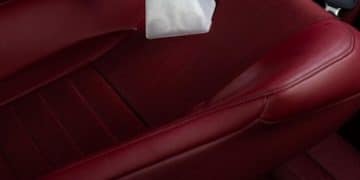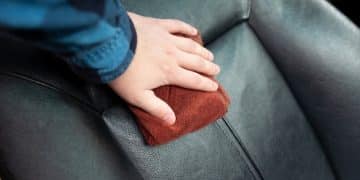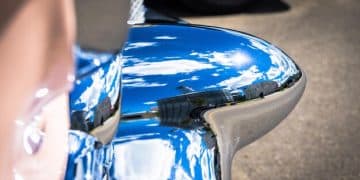How to Choose Car Detailing Products for Your Car’s Paint
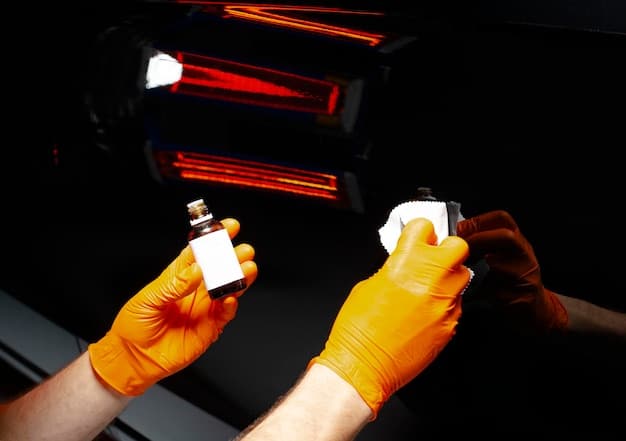
Choosing the right car detailing products for your car’s paint involves understanding the type of paint, identifying specific needs like cleaning or protection, and selecting products formulated for that paint type while avoiding harsh chemicals.
Selecting the right car detailing products can seem daunting, especially when considering your car’s specific paint type. This guide breaks down how to choose how to choose the right car detailing products for your car’s paint type, ensuring a brilliant and protected finish.
Understanding Your Car’s Paint Type
Before diving into the world of detailing products, it’s crucial to understand the type of paint your car has. Different paints require different care and products to avoid damage and achieve the best results. Identifying your car’s paint type is the first step in ensuring a flawless finish.
Single-Stage Paint
Single-stage paint is a simple system comprised of just one layer of paint that provides both color and protection. This type of paint is commonly found on older vehicles, classic cars, or fleet vehicles. It’s more vulnerable to oxidation and fading over time, requiring specific products to restore and maintain its shine.
Two-Stage Paint (Base Coat/Clear Coat)
Two-stage paint is a modern system consisting of two layers: a base coat providing the color and a clear coat providing protection. The clear coat is a transparent layer that acts as a barrier against UV rays, scratches, and other environmental factors. This type of paint is more durable than single-stage, but still requires specific detailing products to maintain its luster and protect the clear coat.
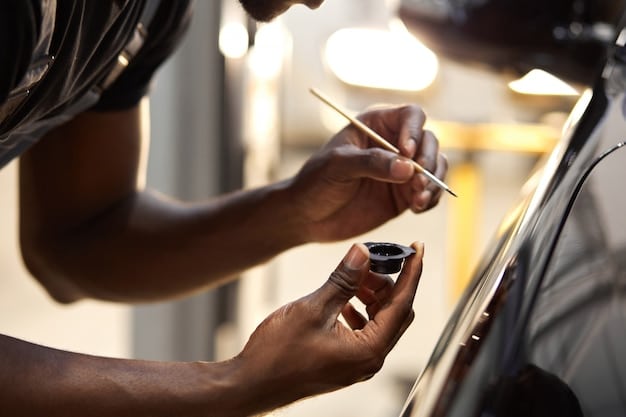
How to Identify Your Car’s Paint Type
Identifying your car’s paint type can be done through a few methods. The easiest way is to check your car’s documentation or contact the manufacturer. If those aren’t options, you can try a simple test: apply a polishing compound to a small area and buff it with a clean microfiber cloth. If the cloth shows the car’s color, it’s likely single-stage paint. If the cloth remains clean, it’s two-stage.
- Check Vehicle Documentation: Consult your car’s manual or contact the manufacturer for specific details about the paint system used.
- Perform a Hand Polish Test: Apply a small amount of polishing compound to a hidden area. If the applicator pad picks up the color of the paint, it’s likely a single-stage system.
- Look for Clear Coat Imperfections: Examine the surface for clear coat imperfections like swirls or scratches. These are indicative of a two-stage paint system with a clear top layer.
Understanding whether your car has a single-stage or two-stage paint system is vital for choosing the right detailing products. This knowledge ensures you’re using products that cater specifically to your car’s paint needs and protect it from damage.
Choosing the Right Car Wash Soap
The first step in any detailing process is washing your car. It’s essential to choose a car wash soap that cleans effectively without stripping away wax or damaging the paint. The wrong soap can leave your car dull and unprotected. So, what should you look for?
When selecting a car wash soap, it’s important to consider pH balance, ingredients, and intended use. A pH-balanced soap is gentle on your car’s paint and won’t cause damage. Additionally, look for soaps that are specifically designed for automotive use, as household cleaners can be too harsh.
pH-Balanced Soap
pH-balanced soaps are formulated to be gentle on your car’s paint. They effectively remove dirt and grime without altering the paint’s chemical balance, thus preventing damage. These soaps typically have a pH of around 7, which is neutral.
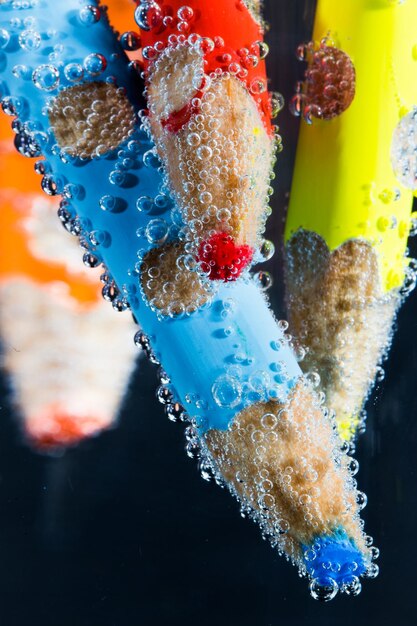
Wax-Safe Soap
Wax-safe soaps are designed to clean your car without removing or diminishing the protective wax layer. This type of soap is ideal for maintaining the longevity and effectiveness of your car wax, ensuring your car remains protected and glossy for longer. Regular use helps to preserve the wax’s hydrophobic properties.
Avoid Harsh Chemicals
Avoid car wash soaps that contain harsh chemicals such as solvents, phosphates, or strong detergents. These chemicals can strip wax, damage paint, and even cause discoloration. Always read the ingredients list and opt for products that are specifically formulated for automotive use.
- Read the Label: Always check the ingredients list to ensure the soap is free from harsh chemicals.
- Look for pH-Balanced Formulas: Opt for soaps with a pH of around 7 to ensure gentle cleaning.
- Consider Wax Compatibility: Choose a soap that is specifically labeled as wax-safe to protect your car’s wax layer.
Selecting the right car wash soap is crucial for maintaining your car’s paint health and appearance. By choosing pH-balanced, wax-safe options, you can clean your car effectively without causing damage or compromising the protective wax layer. Avoiding harsh chemicals ensures your car’s paint remains vibrant and protected.
Choosing the Right Polishing Compound
Polishing compound is essential for removing swirl marks, scratches, and oxidation from your car’s paint. However, using the wrong polishing compound can cause more harm than good. Selecting the right one depends on the severity of the paint imperfections and the type of paint your car has. There are several types of polishing compounds available, each with its own level of abrasiveness.
Light Polishing Compound
Light polishing compounds are designed for removing minor swirl marks and light oxidation. They are gentle enough to be used on a regular basis without damaging the paint. These compounds are ideal for cars with well-maintained paint that only needs slight correction.
Medium Polishing Compound
Medium polishing compounds are more abrasive than light ones, designed for removing moderate swirl marks and scratches. They offer a balance between correction and safety, making them suitable for cars with more noticeable imperfections. Use with caution on softer paints to avoid creating new swirl marks.
Heavy Polishing Compound
Heavy polishing compounds are the most aggressive, designed for removing severe swirl marks, scratches, and oxidation. They should be used sparingly and only on cars with heavily damaged paint. After using a heavy compound, follow up with a lighter one to refine the finish and remove any holograms.
When choosing a polishing compound, consider the type of paint your car has. Softer paints, like those found on some Japanese cars, are more prone to scratching and require gentler compounds. Harder paints, like those found on some German cars, can withstand more aggressive compounds. Always test the compound on a small, inconspicuous area before applying it to the entire car.
Choosing the correct polishing compound helps in fixing paint imperfections without causing additional damage. It ensures that the car’s paint is restored to its original shine, thereby augmenting its aesthetic appeal and value.
Selecting the Right Car Wax or Sealant
After washing and polishing, protecting your car’s paint is crucial. Car wax and sealants provide a protective layer against UV rays, road grime, and other environmental contaminants. Choosing the right product depends on your preferences, budget, and desired level of protection. Both car wax and sealants protect your car’s paint but differ in longevity and shine.
Car Wax
Car wax is made from natural ingredients like carnauba wax. It provides a warm, deep shine but typically lasts only a few weeks to a few months. Wax enhances the depth of the paint and gives it a rich, glossy appearance.
Paint Sealant
Paint sealant is made from synthetic polymers. It offers longer-lasting protection, typically lasting several months to a year. Sealants provide a slick surface that repels water and grime, making it easier to wash your car. They tend to have a more reflective, glassy shine.
Hybrid Products
Hybrid products combine the benefits of both wax and sealant. They offer a balance of shine and protection, making them a popular choice for many car enthusiasts. These products are designed to provide the warm glow of wax with the durability of a sealant.
- Consider Durability: If you want long-lasting protection, opt for a sealant or hybrid product.
- Think About Shine: If you prefer a warm, deep shine, choose a car wax.
- Read Reviews: Research different products and read reviews to see what others have experienced.
Choosing the right car wax or sealant depends on your personal preferences and needs. Whether you prioritize shine, durability, or a combination of both, selecting the correct product ensures your car’s paint remains protected and looks its best. It’s about finding the balance between appearance and long-term protection.
Importance of Clay Bars and Surface Prep
Before polishing or waxing, it’s essential to prep your car’s surface using a clay bar. A clay bar removes embedded contaminants that washing alone can’t remove. This step ensures that polishing and waxing are more effective and the finish is smoother. Proper surface preparation is key to achieving a flawless detailing job.
A clay bar is a putty-like compound that glides over your car’s paint, picking up contaminants like brake dust, industrial fallout, and tree sap. These contaminants can cause paint to feel rough and prevent wax or sealant from bonding properly. Using a clay bar is the step everyone forgets about when detailing!
Types of Clay Bars
There are different types of clay bars available, each with its own level of abrasiveness. Fine-grade clay bars are suitable for lightly contaminated surfaces and are safe for regular use. Medium-grade clay bars are more aggressive and designed for heavily contaminated surfaces. Always use a clay lubricant when using a clay bar to prevent scratching the paint.
How to Use a Clay Bar
To use a clay bar, first wash and dry your car. Spray a clay lubricant onto a small section of the car’s surface. Gently glide the clay bar over the lubricated area, using light pressure. Fold the clay bar periodically to expose a clean surface. Repeat the process until the entire car is clayed. Once done, wipe off any remaining lubricant with a clean microfiber cloth.
Benefits of Using a Clay Bar
Using a clay bar offers several benefits. First, it removes surface contaminants, making the paint feel smoother. Second, it improves the bonding of wax or sealant, resulting in longer-lasting protection. Finally, it enhances the overall appearance of your car’s paint. Claying your car before other detailing steps ensures that the final results are maximized.
Using a clay bar and properly preparing the surface is essential for detailing as it increases the paint shine and duration of wax. It also makes the overall process much smoother!
Proper Application Techniques and Tools
The effectiveness of car detailing products depends not only on the product itself but also on how it’s applied. Using the correct techniques and tools can make a significant difference in the final result. This section covers essential application techniques and tools for achieving a professional-quality detailing job. Using the right application methods can transform a good product into an excellent result.
Microfiber Cloths
Microfiber cloths are essential for car detailing. They are soft, absorbent, and won’t scratch the paint. Use microfiber cloths for washing, polishing, waxing, and drying your car. Keep a variety of microfiber cloths on hand for different tasks.
Applicator Pads
Applicator pads are used for applying wax, sealant, and polishing compound. Foam applicator pads are best for applying wax and sealant, while microfiber applicator pads are ideal for applying polishing compound. Choose high-quality applicator pads to avoid scratching the paint.
Dual-Action Polisher
A dual-action polisher is a power tool that helps you polish your car’s paint more effectively than by hand, it helps fix imperfections. It oscillates and rotates, reducing the risk of creating swirl marks. Using a dual-action polisher can save time and effort while achieving superior results.
- Use Clean Tools: Always use clean microfiber cloths and applicator pads to avoid transferring dirt and grime back onto the paint.
- Apply Products Evenly: Ensure that you apply products evenly and in thin layers to prevent streaking and uneven coverage.
- Follow Product Instructions: Always read and follow the product instructions for best results.
Mastering proper application techniques and using the right tools are key to achieving a professional-quality detailing job. With the right tools, high-quality product, and a bit of practice, you can achieve a flawless finish that will make your car look its best.
| Key Point | Brief Description |
|---|---|
| 🔍 Paint Type | Identify single-stage or two-stage paint to choose suitable products. |
| 🧼 Car Wash Soap | Use pH-balanced, wax-safe soap to clean without damage. |
| ✨ Polishing Compound | Select light, medium, or heavy compounds based on imperfection severity. |
| 🛡️ Wax or Sealant | Choose wax for shine or sealant for durable protection. |
FAQ
▼
Identifying your car’s paint type is crucial because different paints require specific products. Using the wrong products can damage the paint, leading to discoloration or premature wear. Proper identification ensures you use products suitable for your car’s needs.
▼
Car wax is made from natural ingredients and provides a warm, deep shine. Sealant, made synthetically, offers longer-lasting protection and a glossy shine. The choice depends on preference for shine versus durability in protecting your car’s paint.
▼
You should use a clay bar on your car as needed, typically every 6 to 12 months, or whenever the paint feels rough after washing. This removes embedded contaminants affecting paint smoothness and wax bonding. Regular claying enhances paint’s appearance and longevity.
▼
No, household cleaners are not recommended for washing your car. They often contain harsh chemicals that can strip wax and damage the paint. Automotive-specific soaps that are pH-balanced and gentle should always be used instead.
▼
Microfiber cloths are used for a variety of tasks in auto detailing, including washing, polishing, waxing, and drying. Their soft texture and high absorbency make them ideal for cleaning without scratching the paint, ensuring a clean and shiny finish.
Conclusion
Choosing the right car detailing products for your car’s paint type is an investment in its appearance and longevity. By understanding your paint type, selecting appropriate products, and using proper application techniques, you can achieve a professional-quality finish that protects and enhances your car’s beauty.

